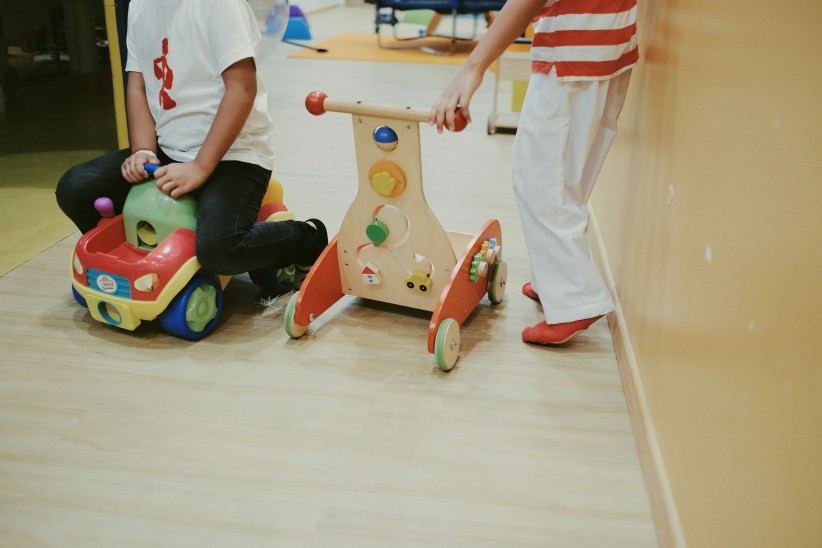According to the National Highway Traffic Safety Administration, a whopping 75 percent of car seats on the road are installed incorrectly. To help you insure a safe ride for your child, we asked some of the top industry experts for their tips on insuring a safe ride for you and your child.

Make sure your child is in the correct seat for their size and age.
Children should ride in rear-facing seats until they reach the seat’s height or weight limits (see item No. 5 below). Once your child has outgrown the rear-facing seat, they can ride in a forward-facing seat with a harness until they reach that seat’s height or weight limits, which can be anywhere from ages 4-7, according to the National Highway Traffic Safety Administration. Your child is then ready for a booster seat, which positions the seatbelt safely over your child’s body (for more on booster seats, see the sidebar below). Your child should use a booster seat until he can fit in a seat belt properly, meaning the lap belt is snug against their upper thighs and the shoulder belt should lie securely across the shoulder and chest.
Read the manual, read the manual, read the manual.
A car seat might be one of the few items for which reading the manual cover to cover is essential for proper use. According to Sarah Tilton, the Britax Child Passenger Safety Advocacy Manager, reading instructions is the number one thing not to compromise on when installing car seats. In addition to the car seat manual, Tilton explains that parents should read the labels on the car seat along with the vehicle manual regarding car seat installation. However, for visual learners, try looking up the car seat manufacturer online. Most websites now have helpful videos that walk through the installation process with detailed demonstrations.
Check the expiration date.
Did you know that car seats can expire? “The plastic shell and other components may degrade over time if the car seat has been improperly used or stored in an adverse environment for a prolonged period of time,” Tilton says. “Food, drinks, dirt and debris, cleaners, and other contaminants may cause degradation of the seat’s effectiveness.” Additionally, Tilton says, parts of the seat may be lost, installed incorrectly, or damaged due to wear and tear; instructions or labels can be lost or illegible, and instructions might have been updated, making them irrelevant for older models of the product.
Register your seat.
Make sure you register your car seat with the manufacturer—most brands allow you to do this online—so that you are notified of any recalls. You will need to provide the model number and date of manufacture, which you can find on the label attached to the restraint—often located on the rear, side, or bottom of the restraint.
Rear-facing car seats are safer for young children.
Rear-facing car seats better protect the head, neck, and spinal cord of children in accidents. “Frontal impacts are the most common type of crash,” Tilton says. “A rear-facing child’s head, neck, and spine are cradled by the car seat shell.” Furthermore, Tilton notes that a child’s skeletal system has not fully calcified until somewhere around age 2. “Forward-facing too early can result in a life-long injury, including fatality,” she says. When can you switch to forward-facing? Many experts recommend as long as possible—essentially, until your child has reached the height or weight limits of a rear-facing car seat (listed in your seat’s instruction manual).
More money might mean better quality.
One of the major deterrents in using a car seat, especially once children outgrow their first seat, is the costliness. However, the cost of a seat can actually correlate with the number of safety features offered. “The safest car seat is the one that is installed correctly, the one that fits your child, and the one you’re going to use properly every single time,” says Allana Pinkerton, Certified Child Passenger Safety Technician and Global Safety Advocate for Diono. “We all meet the same federal standards. But when you pay more money, you do get those extra safety features for the ‘what-if scenarios,’” she says. According to Pinkerton, some features that can be worth the extra cost include lateral support panels around the head and neck area and a strong, rigid casing.
Don’t buy a used seat unless you know its full history.
Don’t purchase a used car seat if you don’t know its full crash history—you should not continue using a seat if it has been through a moderate to severe crash. The Car Seat Lady’s website has a very handy chart that lists manufacturers’ recommendations for usage after a crash at carseatlady.com/aftercrash. Those that say you can continue using their seats specify that this is the case only after a minor crash, which means that the vehicle could be driven away from the crash site, the door nearest to the child restraint was undamaged, no vehicle occupants incurred injuries, and there was no visible damage to the car seat.
Think ahead to be prepared on-the-go.
On-the-go New York City parents face an additional obstacle when it comes to car travel: Ensuring their child’s safety in taxis and car services. A car seat is a lot to be schlepping around, but luckily there are services such as uberFamily, the family friendly version of the original taxi app. uberFamily provides caregivers the option to call a cab with a car seat already installed for a $10 surcharge. If, however, you’re set on using your own seat, the car seat experts over at the Car Seat Lady have great instructional videos for installing a car seat in a taxi on their website, at thecarseatlady.com.
Meet with a Child Passenger Safety Technician.
There are 38,000 nationally certified child passenger safety technicians in the United States. If you’re unsure of how to install the car seat or want to triple check your own installation, visit the National Child Passenger Safety Certification website at cert.safekids.org to find your nearest technician. When you buy your car seat, be sure to ask if there’s someone available to help with installation. There might be an in-store technician ready to help you install the seat immediately after purchase for no extra charge.
Test your installation.
You’ve read the manual and watched the videos, but how can you be doubly sure that you’re ready to hit the road? Try what Safekids Worldwide calls the “Inch Test.” After you’ve installed the seat, tug at the base where the seat belt goes through it. “At the belt path the car seat should not move more than one inch left to right and front to back,” Tilton says. You should also do a “Pinch Test:” With the harness tightly buckled and coming from the correct slots (as identified by the manual), the clip should be at armpit level. Pinch the strap at your child’s shoulder. If can’t pinch any webbing, the seat is installed correctly. Again—if you’re uncertain about anything, seek the guidance of your nearest certified technician.
Before you shop for a car seat (and especially before you go to install one), we recommend familiarizing yourself with the different kinds of seats out there. Click here for our car seat glossary!





















